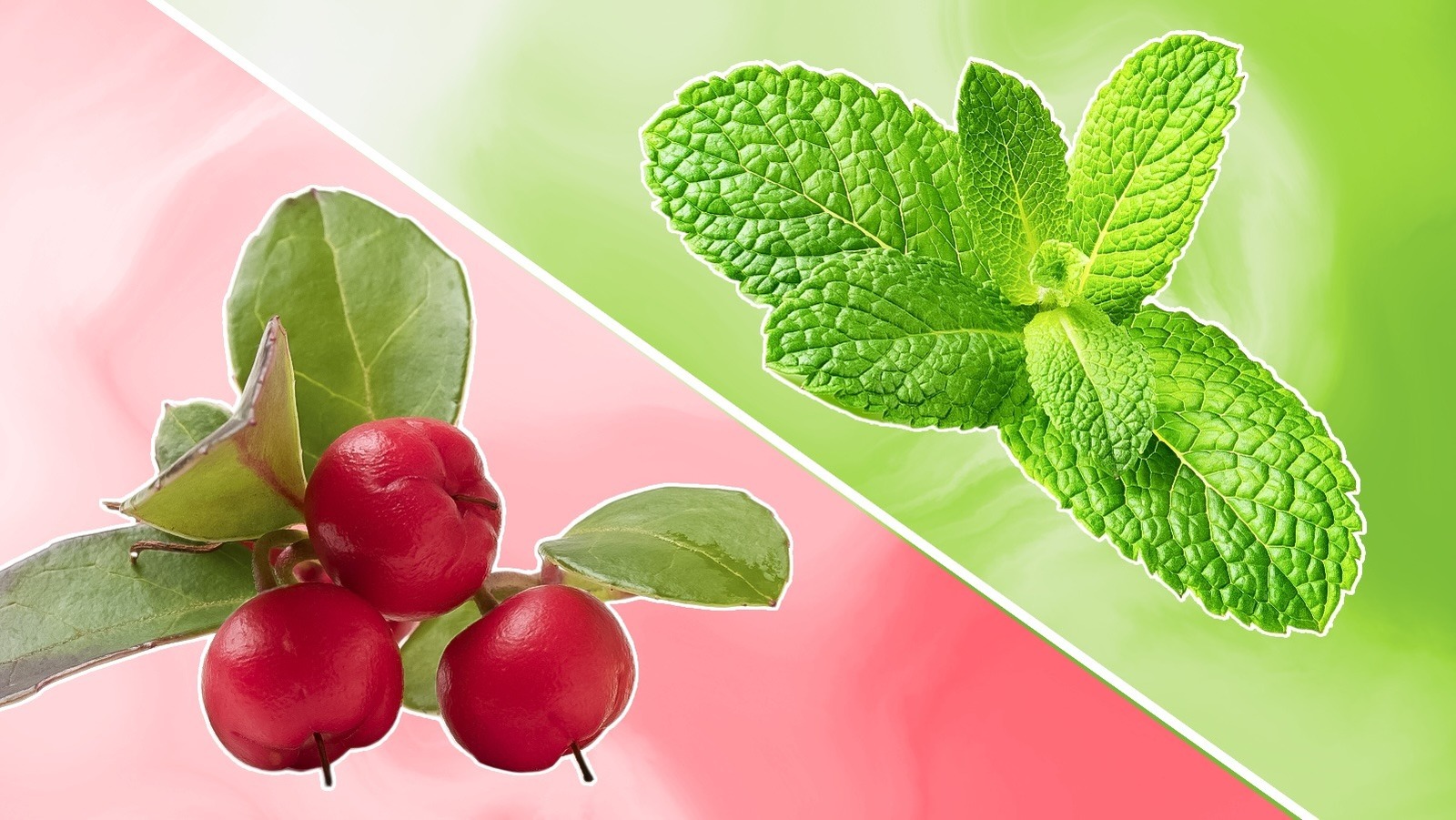Mint is one of the most well-known flavors on earth, adding freshness and the whisper of menthol to chocolate, cookies, ice cream, drinks, tea, and flavored coffee. Different types of mint have subtle differences in flavor, from the sweet, mild, and uplifting flavor of spearmint, to the zesty essence of orange mint, to the distinctly chocolatey nuance of chocolate mint. The two mint flavors that are probably most often used in the culinary world are peppermint and wintergreen.
Peppermint is easily recognizable for its strong, cool, and refreshing taste due to the menthol and eucalyptol it contains. Wintergreen is sweeter than peppermint and has a warmer flavor as opposed to the stark coolness of mint. Interestingly, peppermint is a hybrid of spearmint and watermint, while wintergreen isn’t even part of the mint family. It’s actually a type of heath (the family Ericaceae), but has an aromatic compound in the leaves and berries called methyl salicylate, which gives it a distinctly minty flavor. And the oils from wintergreen have been found to bring wonderful minty flavors to food products.
Peppermint is more versatile and can be used in its natural form, and its oils and extracts are often used in foods and drinks. The leaves and oils are used to bring a minty freshness to salads, sauces like mint jelly, and dips, and are incorporated into cooked dishes such as stews and curries. You’ll also often find mint leaves tucked in cocktails like the classic mint julep. Peppermint extracts and oils are also found in all manner of desserts from cakes and frosting to smoothies and pies.
Gentle wintergreen is also an all-rounder
Wintergreen oil is the form most often used in foods, with only 0.04% or less needed to inject that minty flavor. Because wintergreen is not as sharp and strong as peppermint, it is often the preferred flavoring for foods such as candy and gum, and is instantly recognizable for its use in dental products like toothpaste and mouthwash. It’s also a common ingredient in root beer. The wintergreen berries also have a lovely, gentle minty flavor, along with a hint of sweetness.
They are often used for this characteristic in jams, fruit salads such as a mint and melon salad, pancakes, desserts, and even baked into pies, partnering well with strawberries and rhubarb, or in an apple sauce pie. They’ve even been mixed with veggies like corn and made into muffins. They are also brewed into a tea (another name for wintergreen is actually teaberry), which has that refreshing minty essence, more subtle than peppermint, but also a distinctly root beer-like flavor which is quite unique to wintergreen. Sometimes, the berries are even used as an unusual flavoring for ice cream that’s popular in Pennsylvania.
Peppermint and wintergreen are rarely used together, with each being more suited to different types of foodstuffs than the other, never mind the mintiness being overpowering to all other ingredients. They have, however, been mixed together to help with recovery from colds and flu, and to uplift your mood — being blended with bergamot and eucalyptus oils into a bath elixir. A 15-minute soak in the bath with this blend of oils will help to ease a tight chest, relax the body, and bring you a good night’s sleep.






